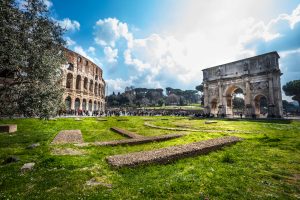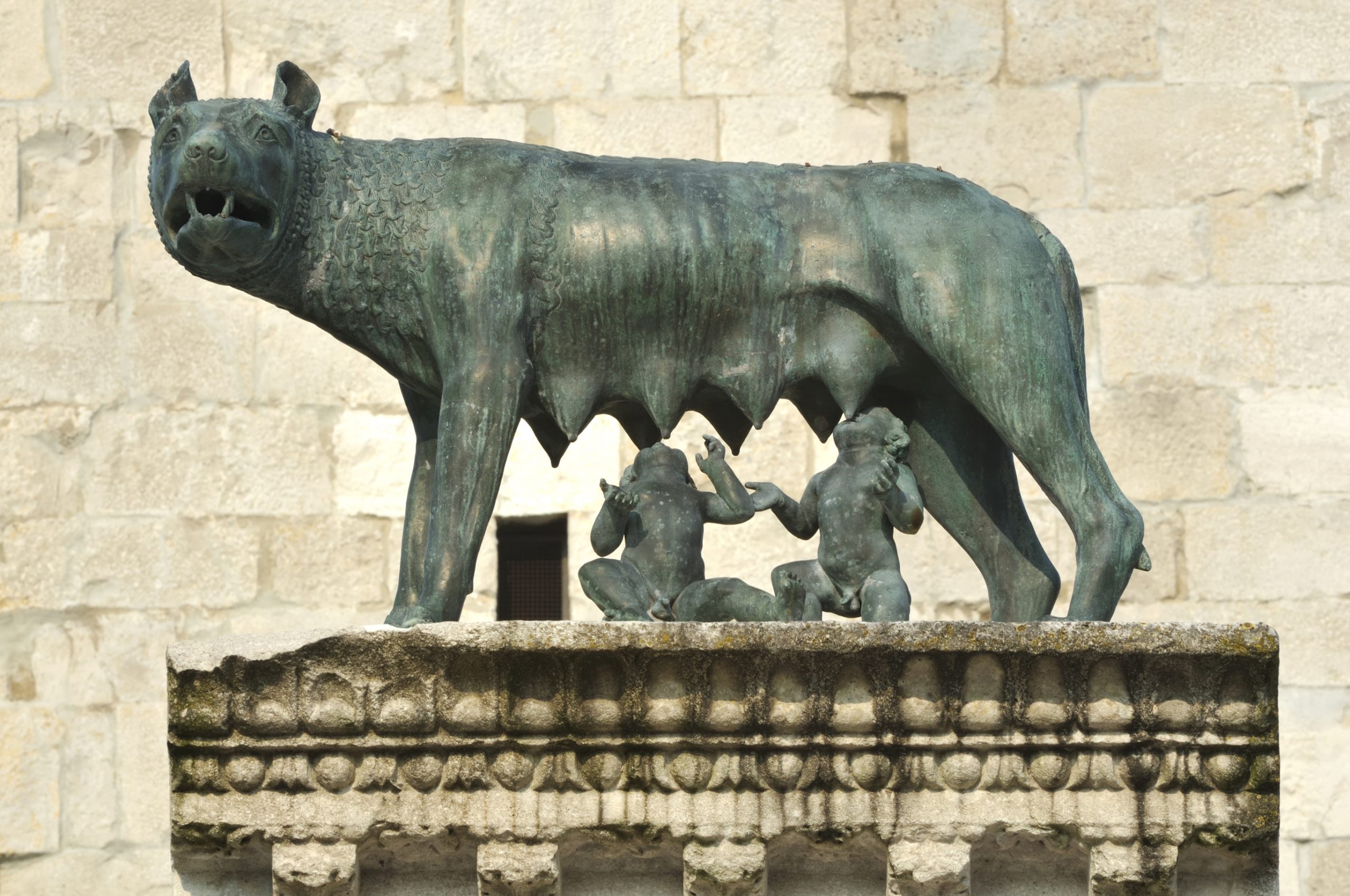The eternal city traces its birth to April 21, 753 B.C. If you’re in Rome, you can enjoy festivities that include concerts, gladiator displays, a parade, and fireworks over the Tiber. Throughout the year you’ll find traces of Rome’s long life everywhere in the city, including on the tops of manhole covers, which are emblazoned with S.P.Q.R., the ancient Latin abbreviation for the Senatus Populusque Romanus, “the Senate and People of Rome.” Contemporary Italians irreverently joke that the initials really stand for “Sono pazzi questi romani.” (“They’re crazy, these Romans.”) If so, they’re crazy in the best possible way.
I once approached the amiable concierge Luciano at the Hassler Hotel with a request. “Sarebbe possibile…” (Would it be possible…) I began, but he cut me off with a wave of his hand.
“Signora, this is Rome,” he said. “Anything is possible.”
It’s always been so. Rome’s long history began with a tale of love—or, more accurately, lust —almost three millennia ago. The pagan god Mars, smitten by the beauty of a Vestal Virgin, snuck into her temple in the town of Alba Longa and raped her. When the disgraced Vestal gave birth to twin boys, the evil tribal king ordered the infants thrown in the Tiber.
The cradle containing the babies washed ashore at the base of the Palatine hill, named for Pale, a goddess of shepherds. There, according to legend, a lupa (she-wolf) suckled the twins Romulus and Remus. However, their nursemaid may well have been human since lupa was slang for prostitute.
After the twins had grown to maturity, they decided to build a town on the banks of the Tiber. In a violent argument, Romulus killed his brother. Taking command, he gave his name to the settlement that would grow into a great empire. Rome changed everything, bringing civilization — laws, roads, urban planning, public works, even indoor plumbing—to a vast swath of territories.
You can learn both history and vocabulary just by walking around Rome. Via Condotti, lined with elegant designer shops, was named for the aqueduct, or conduit, built in 19 B.C. to carry “acqua vergine” (virgin water) from a spring in the Alban hills south of the city. According to legend, a local young girl led Roman soldiers to the site—a discovery that the parched city celebrated for 59 days.

When I (inevitably) get lost in Rome, I look —and listen —for the nearest fountain. Italians describe Roma as “la città delle fontane,” with hundreds of water-spouting sculptures. In front of La Scalinata (the Roman term for what tourists call the Spanish steps), Pietro Bernini built the fountain “La Barcaccia” (old boat), designed to recall the floods of 1621, when the Tiber overflowed and left the wreck of a battered boat in its wake. His son Gian Lorenzo Bernini’s magnificent Fontana dei Fiumi (Fountain of the Rivers) decorates Piazza Navona, which may be Rome’s most beloved public square.
To meet a Romano de Roma (dialect for a true native), go to the nearby Piazza di Pasquino. There stands an ancient statue dug up by street workers around the turn of the sixteenth century. In celebration of the feast of San Marco on April 25, 1501, a cardinal draped a toga around the armless torso and attached Latin epigrams to its base. Jocular Romans followed suit, covering this unofficial community bulletin board with anonymous satiric jibes that lampooned church and state. The “talking statue” hasn’t been quiet since.
If you go out with friends in Rome, you might suggest fare alla romana or “going Dutch.” Or ask a Romanista, a fan of the Rome football (soccer) club, how the leoni giallorossi got their name. (It’s from the giallo oro, golden yellow, and rosso porpora, crimson red, of ancient Rome).
Here are some other modi di dire romani (Roman sayings) to listen for on your next trip to the eternally fascinating city:
Roma caput mundi
Rome, center of the world, a Latin expression used by writers since the days of Cicero
Tutte le strade portano a Roma
All roads lead to Rome
Roma non fu costruita in un giorno
Rome wasn’t built in a day
Fammo alla romana
Let’s do as the Romans do.
Dianne Hales (www.diannehales.com) is the author of La Bella Lingua: My Love Affair with Italian, the World’s Most Enchanting Language (http://tinyurl.com/js7kyfj) and Mona Lisa: My Life Discovered (http://tinyurl.com/h9wywhy)






























